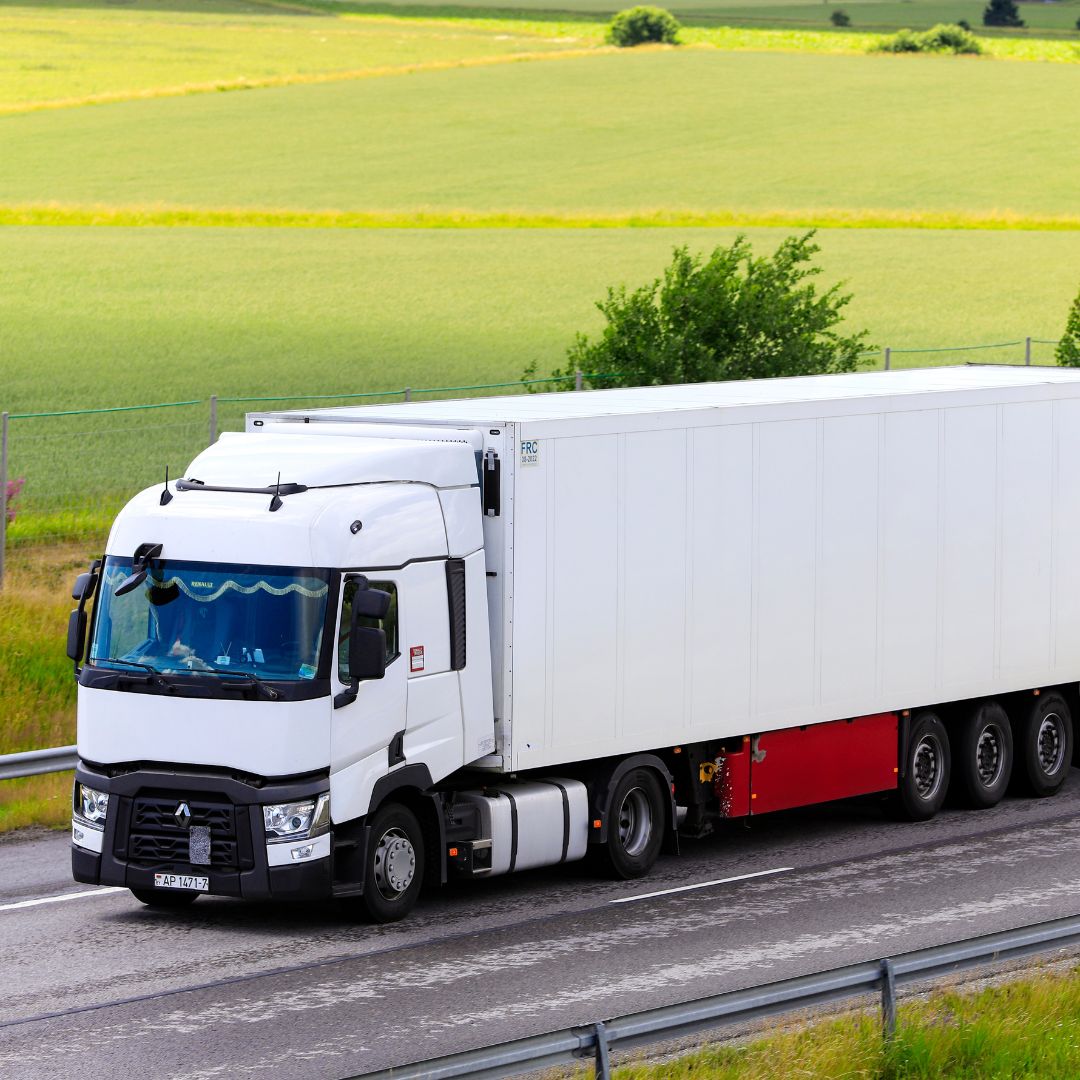The temperature-controlled supply chain is an important part of modern business. It’s responsible for transporting products such as vaccines, blood, pharmaceuticals and fast-moving consumer goods like food at the right temperature so that they stay safe and effective. The cold chain supply chain needs to work seamlessly to provide optimum results for customers. Cold chain logistics providers need to have a clear understanding of the nature of the product being shipped as well as its destination before anything else can happen.
The Importance Of Temperature-Controlled Transport
If you’re shipping food and beverage products, it’s essential to use temperature-controlled transport. Temperature-controlled transport is necessary for maintaining the integrity, quality and shelf life of perishable goods.
For example, if you were to ship fruit such as strawberries or mangoes in an unrefrigerated truck, they would spoil within a few days. These fruits are best kept at 2 degrees celsius or less because they will last longer when stored at this temperature than if they were stored above 5 degrees c
It is also important that these fruits reach their destination fresh and ready for consumption by customers at the other end of the supply chain (or supply line). Temperature-controlled trucks ensure this happens by keeping those temperatures controlled from the farm gate to the retail shelf through refrigerated vehicles (known as reefers).
The Cold Chain Supply Chain Needs To Work Seamlessly To Provide Optimum Results For Customers
Cold chain logistics are a complex system of storage and transportation of perishable goods. Cold chain logistics is used to ensure that goods remain within their required temperature range while they’re being transported across long distances. This prevents spoilage, which would diminish the quality of the product, and can also decrease its shelf life.
Cold chain supply chains need to work seamlessly to provide optimum results for customers. If not implemented correctly, cold chain supply chains can easily become overwhelmed by an influx in demand for products or services during peak times like Christmas or summer holidays. The stress caused by these pressures may cause them to break down completely if not handled properly; which could lead directly to massive losses for companies involved in this industry!
Cold Chain Logistics Is A Complex System And Needs To Be Implemented Correctly
“Cold chain logistics providers must have a clear understanding of the nature of the product being shipped.”

The nature of the product being shipped can be broken down into four main categories: temperature-sensitive, perishable, pharmaceutical and humanitarian/emergency relief. The temperature at which the product needs to be stored is dependent on its nature as well as how long it needs to be stored for. For example, if you were shipping blood plasma from Australia to South Africa for research purposes then it would need to remain frozen at all times until it reaches its destination.
In addition to this information about your products’ temperature requirements and transit times, you will also need to inform your cold chain logistics provider about their intended destination so that they know where they can deliver your goods safely without them spoiling or deteriorating during transport.
Cold Chain Logistics Providers Can Work With A Range Of Customers, From Hospitals And Clinics To Supermarkets And Farm Owners
Cold chain logistics providers can work with a range of customers, from hospitals and clinics to supermarkets and farm owners.
Cold chain logistics providers can provide a range of services for their customers, including:
- Temperature monitoring technology allows the customer to track the temperature of their goods during transit. This technology can be used for many different types of products, including pharmaceuticals and foodstuffs.
- Cold storage facilities in which companies are able to keep their perishable goods at safe temperatures until they are needed by consumers or other businesses. These companies may also offer refrigerated transport vehicles, which allow them to deliver goods safely without damaging their quality or safety standards
What Are The Challenges Of Cold Chain Logistics?
There are a number of challenges involved in cold chain logistics. For example, the need to keep products at the right temperature is imperative for keeping bacteria and other harmful elements at bay. Tracking products as they move through their supply chain is another essential element of cold chain logistics: it allows businesses to ensure that their goods arrive at the right location when they’re supposed to get there, and in good condition. Finally, keeping costs down while maintaining product quality are both crucial parts of this type of logistics solution.
ICT Advancements Help Improve Efficiencies In Cold Chain Logistics Operations
As ICT advancements have helped improve efficiencies in cold chain logistics operations, they’ve also been instrumental in improving supply chain efficiency.
The rise of the Internet of Things (IoT) is one such example. The IoT refers to the network of physical objects that contain embedded technology to communicate and sense or interact with their internal states or the external environment. The IoT can be used for remote monitoring or control across various industries, including transport and logistics.
For instance, container refrigeration units can be fitted with sensors that monitor temperature data as well as other parameters such as humidity levels, location and time stamps etc., allowing companies to track their shipments at all times via mobile devices or online dashboards.
Australia Has Seen An Increase In Demand For Cold-Chain Logistics Services
Australia is a major producer of food and beverages, accounting for over 25% of global exports. The industry is growing rapidly, with an increase in demand for cold chain logistics services.
This growth has been driven by factors such as:
- Increasing urbanization and the growth of retail chains in Australia
- Improved supply chain management
- Increased trade volumes between Australia and other countries.
Who Will Benefit The Most From Cold Chain Tracking And Fleet Management Systems?
- Customers: The ultimate beneficiaries of cold chain logistics will be the end users. As customers, you’re looking for a product that is safe, fresh and ready to eat when it arrives at your door. It’s important that your suppliers can guarantee this all the way from farm to fork, with accurate tracking throughout the supply chain. Cold chain management systems provide complete visibility over product movements, so you can rest assured that everything is being done correctly—and if something goes wrong, it can be corrected promptly.
- Businesses: Temperature Monitoring helps smart companies to reduce waste and increase customer satisfaction quickly. Cost-Effective Monitoring, Control, and Compliance for Refrigerated Assets.
What Solutions Exist For Cold Chain Logistics?
There are four main solutions for cold chain logistics:
- GPS tracking and fleet management systems
- Cold chain monitoring and tracking systems
- Cold chain monitoring and control systems
- Cold chain logistics software solutions for trucking companies (and other industries) to use as a whole or in part
How Can You Overcome The Challenges In Cold Chain Logistics?
With GPS tracking and fleet management systems, companies can reduce operating costs by improving efficiencies and reducing fuel usage. With these tools, you’ll be able to track your fleet 24/7 and ensure that they are always moving products as efficiently as possible. You’ll also be able to rest assured knowing that every truck is safe in its travels while still maintaining a high level of service – this helps keep customers happy!
Why GPS Tracking Is A Must!
GPS tracking and fleet management systems are used to monitor temperature-controlled transport. These systems allow for real-time monitoring of the location of a vehicle so that you can ensure that your products are delivered to the right place at the right time.
It is important for companies that rely on cold chain logistics to be able to track their vehicles in order to manage their supply chains more efficiently. If a shipment goes missing or arrives late, it could result in significant financial losses for businesses due to damaged products or lost sales opportunities.
GPS Tracking And Fleet Management Systems Can Help Address Issues In Cold-Chain Logistics
Cold chain logistics is the process of keeping temperature-sensitive products safe and secure during transport, as well as ensuring that they are delivered on time and in good condition to their end destination. These systems include:
- GPS tracking – Tracking devices (via satellite) can monitor a vehicle’s location at all times so that it can be easily located if needed. This also helps to reduce spoilage or theft by allowing you to track your product throughout its journey.
- Fleet management – Fleet management software allows you to monitor each vehicle’s performance metrics like fuel consumption, speed and mileage so that you have a better idea of how efficient each driver is being with their duties. You’ll also be able to see where there are particular spots for improvement within your fleet based on these metrics so that when someone does make an error, it can be addressed promptly rather than having several people make the same mistake before anyone notices!
Conclusion
Cold chain logistics providers need to have a clear understanding of the nature of the product being shipped, as well as working within complex environments. ICT advancements help improve efficiencies in cold chain operations, while GPS tracking and fleet management systems can help address issues with temperature control. We look forward to seeing how these technologies continue to evolve over time!
To learn more about how Linxio can help your cold chain logistics business, click here.



